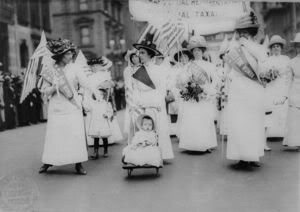Burning the Midnight Oil for Progressive Populism
 We in the US take the two party system for granted, but a two party system is not normal among advanced industrial countries. And, in our history, we used to have a lot more third parties with a lot more impact on our political system in the US. What happened?
We in the US take the two party system for granted, but a two party system is not normal among advanced industrial countries. And, in our history, we used to have a lot more third parties with a lot more impact on our political system in the US. What happened?
This diary is one of a series that was originally published as single, long, sprawling diary.
For most of its political history to the late 1800’s, the US was either dominated by one or two political parties. The (extra-constitutional) winner take all electoral college system and the winner take all nature of a state legislature selecting the state’s Senator strongly pushed in that direction.
But alongside this was a political institution that allowed third parties to emerge and compete for influence ~ and indeed, the Great Re-Alignment from the Democrats and the Whigs to the Republicans and the Democrats occured in part thanks to the existence of third parties that were available to merge with the Anti-Slavery Whigs once they had been purged from the Whig Party.
How did this system work, and where did it go?

Recent Comments